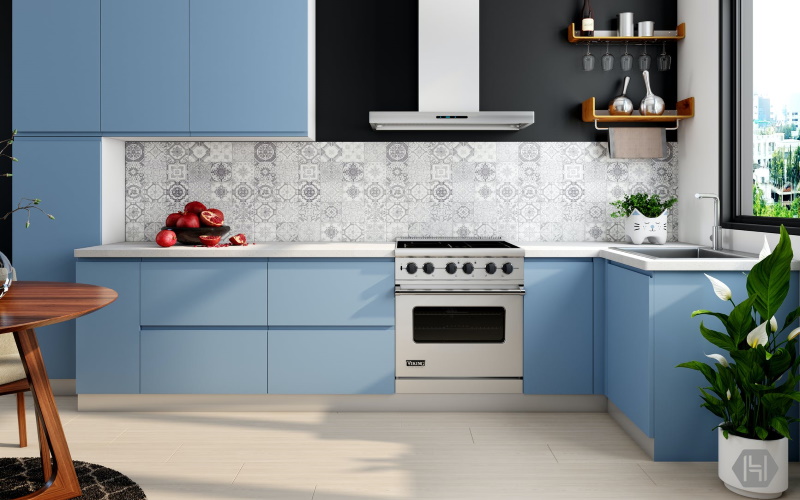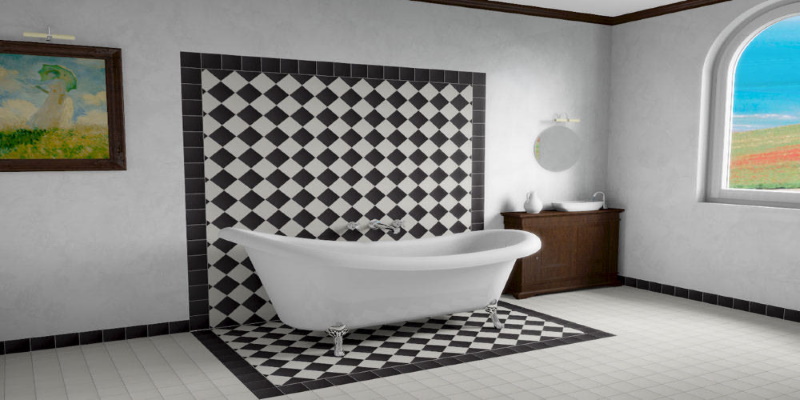Tile Jargon Explained
Every industry has its own jargon and the tile industry is no exception. Although, when buying tiles you don’t need a degree in tile talk, a basic knowledge would be a bonus. The following are some of the terms used in the tile business.
Abrasion Resistance
This is the ability of a tile to withstand foot traffic and friction. The Porcelain Enamel Institute’s abrasion scale goes from PEI 0 (not recommended for floors) to PEI 5 (recommended for heavy commercial floor use). The PEI scale helps to determine how well a tile will wear.
Absorption
This is the amount of water absorbed by a tile. It is measured as the ratio of the weight of water absorbed by the tile versus the weight of the dry tile. Tiles with a lower moisture (e.g. porcelain) are harder and more durable.
Adhesive
Tile adhesives are used to stick tiles to the underlying surface.
Backer Board (Cement Board)
This is a cement board, usually 12mm thick, which can be used to support wall tiles.
Batch
This refers to the tiles produced from one manufacturing run. Colours may vary from one batch to the next. For a consistent look, use tiles from the same batch number.
Bevelled Edge
This is an edge that is not perpendicular. It has a reduced sharpness and is often used for safety or aesthetic reasons.
Blistering
This is where bubbles develop on the tile surface during the firing process.
Butt Joint
A butt joint is where two tiles are laid next to each other without grout.
Bullnose Tile
This is a tile with a rounded, semi-circle edge. They can be used at corners or perimeters.
Ceramic
Ceramic tiles are made from red, brown, or white clay, which are baked at a high temperature to reduce the water content, and then the patterned glaze is applied.
Diamond Blade
A diamond blade is used to cut hard materials such as stone, concrete, glass, or tiles.
Epoxy Adhesive and Grout
Epoxy-based adhesive and grout have impervious qualities, stain, and chemical resistance. It dries to form a plastic-like material.
Glazed Porcelain
These are porcelain tiles that are primed and printed before a layer of hard glass is coated over the top and fused to the body.
Granite
This is one of the hardest natural stones. It comes in tile or slab form and beats other stone products for non-porosity and stain resistance, although it should be sealed. It’s great for floors.
Grout
This is a silica sand, cement, and chemical mix used to fill the joints between tiles. Grout prevents moisture getting behind the tiles and acts as a buffer to reduce vibration and expansion/contraction caused by temperature changes. Grout comes in many colours and may have special properties, such as anti-mould.
Inkjet Printing
Modern tile manufacturing uses inkjet printing to create realistic, high-definition, and non-uniform patterns, such as a natural marble effect.
Iridescent Tiles
These are tiles with a main base colour but appear to display other colours when viewed from different angles. They are usually constructed from glass and are mostly mosaics.
Lappato (Semi-Polished Finish)
When first made, most tiles have a slightly textured surface. A lappato finish is achieved by partially (up to 50%) polishing with an abrasive diamond wheel.
Matt Finish
This is a tile with a dull surface with virtually no reflection.
Mural
This is a tile that creates a picture or decorative design.
Polished Finish
A polished finish is achieved by using a fine abrasive diamond wheel on porcelain or stone, giving an extremely high shine.
Porcelain
Porcelain tiles are made from white clay and fine sand which are fired at a higher temperature than for ceramic tiles. This results in a harder, more dense tile, which is less porous.
Rectified Tile
This involves a machine process, where a tile is cut after the baking process, producing straight edges on all sides.
Rustic Edge
This is a non-uniform, random edge that is designed to give a tile a handmade look.
Sandblasted
This is a process in which sand is sprayed at high speed onto a surface to create a non-slip or rough finish.
Satin Finish
Satin finish tiles have a slight sheen which offer a slight amount of light reflection.
Shade Variation
This is the colour or texture difference from one tile to the next which is inherent in all tile products. In most cases, shade variation is deliberate to mimic natural materials, such as wood or stone.
Slip Resistance (or Anti Slip)
Anti-slip qualities are generally due to abrasive particles on the surface of the tile. Anti-slip is measured using the ‘R’ value, which goes from R9 (higher slip) to R13 (lower slip). R9 or R10 tiles are often recommended for domestic bathrooms and kitchens and R13 tiles are recommended for public wet areas.
Spacers
These are plastic pieces used to evenly separate tiles. Various sizes are available.
Splashback
This is a panel behind a sink or cooker to protect a wall from being stained by splashes. Tiles or glass are popular for splashbacks.
Terra-cotta tile
This is a natural fired clay tile made from more refined clay than quarry tiles. It is versatile and can be used on floors, walls, fire surrounds, and outdoor surfaces.
Tanking
This is where a waterproof membrane is applied within a shower enclosure before tiling to protect the underlying substrate from water penetration.
Tile Density
The density of a tile depends on the materials used, the compression, and the temperature during firing. Lower density tiles are more common for walls, whereas heavier density porcelain tiles are commonly used for floors, which will have to withstand years of foot traffic.
Tolerance
This is the amount of thickness or warping which is acceptable.
Upstand
This is where tiles are used upright instead of a skirting board or at the back of kitchen counter tops.
Vitrified
Vitrified porcelain only absorbs a small amount of moisture (less than 0.5 percent), semi-vitrified tiles absorb 3 to 6 percent, and standard glazed wall tiles absorb 10 to 20 percent. This figure dictates where tiles should be used as it affects their durability.
Wet Room
This is a shower area that has floor tiles instead of a shower tray. The floor is sloped to improve water flow.



